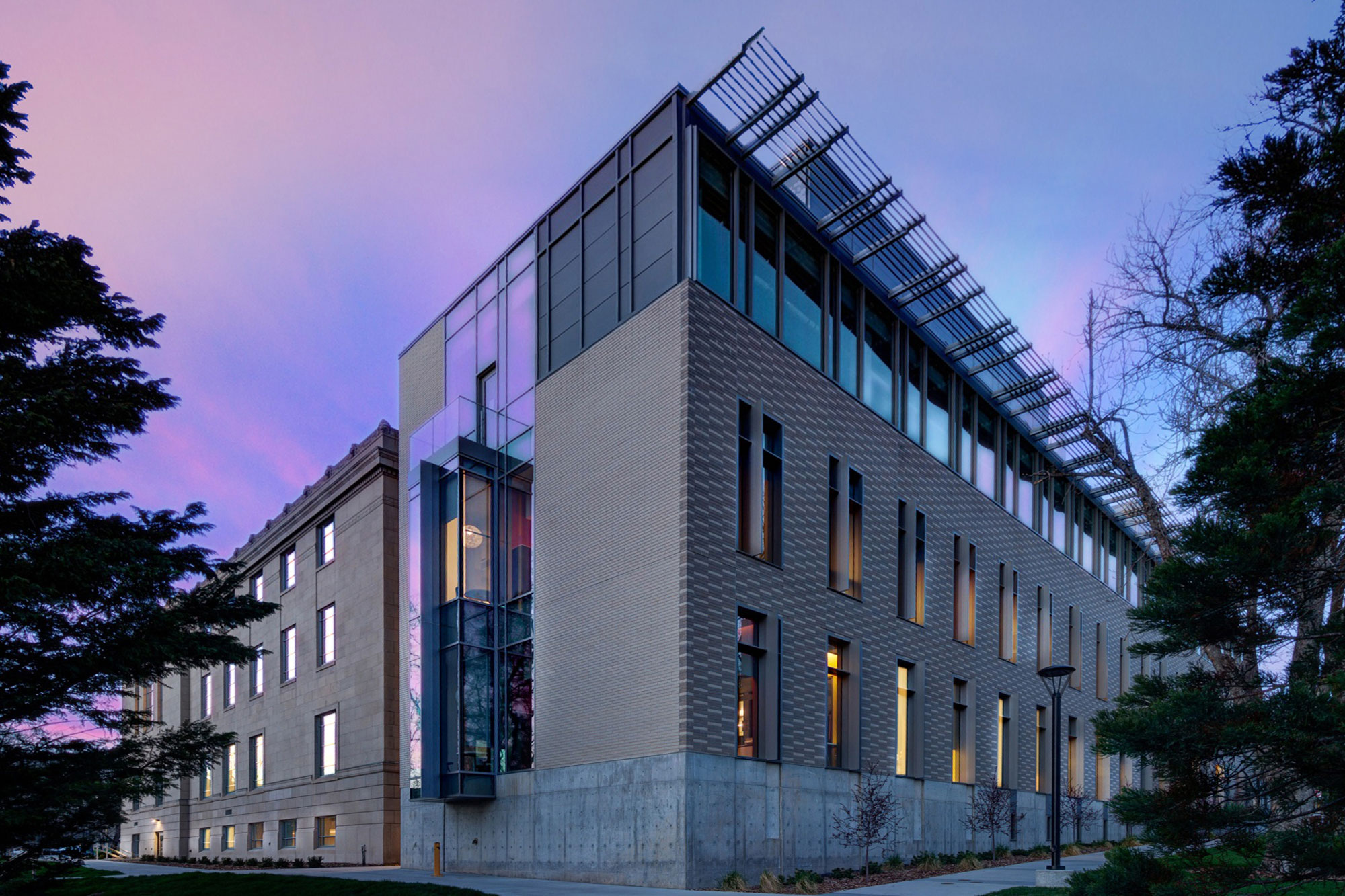Crocker Science Center
 The University of Utah dedicated its new Gary and Ann Crocker Science Center (CSC) in 2018. Led by a $10 million donation from Gary and Ann Crocker, the U completely renovated the 83-year-old George Thomas Building on Presidents Circle. The CSC was originally a library for the U, before becoming the home of the Natural History Museum of Utah from 1968-2011. The CSC is the heart of the College of Science, housing research, teaching, and support for the College.
The University of Utah dedicated its new Gary and Ann Crocker Science Center (CSC) in 2018. Led by a $10 million donation from Gary and Ann Crocker, the U completely renovated the 83-year-old George Thomas Building on Presidents Circle. The CSC was originally a library for the U, before becoming the home of the Natural History Museum of Utah from 1968-2011. The CSC is the heart of the College of Science, housing research, teaching, and support for the College.
During the groundbreaking, former dean Henry White stated, “This modern science hub is ready to serve new generations of students, faculty and staff at the University of Utah. We are extremely grateful for Gary and Ann’s pioneering support for this building to become a world-class science education and research center on campus.”
Research in the CSC draws faculty and students from all seven departments and one school in the College – Biology, Chemistry, Mathematics, Physics & Astronomy, Materials Science Engineering, Geology & Geophysics, Atmospheric Sciences and Mining Engineering — to study STEM subjects from ecology to the basic machinery of cells, and from rock formations to the air we breath. In addition to a fully equipped, world-class biotechnology incubator, the newly renovated Crocker Science Center houses two large lecture halls, teaching laboratories, classrooms, and a host of research programs, including the celebrated Science Research Initiative for undergraduates from the U‘s College of Science.
The rooms are designed with glass walls to serve as a living exhibit of modern science and thus to encourage public viewing and visual participation. Two Creek Coffee is also found on the second floor and is very popular with the COS to grab a cup of coffee and snacks before heading to class or finding a quiet space/classroom to study.
The CSC is also home to the Henry Eyring Center for Cell and Genome Science, Wilkes Center for Climate Science and Policy and the U’s Center for Science and Math Education along with the COS Dean's and staff offices.
Trivia
- During renovations to make the Crocker Science Center, workers found human skeletal remains. Scientists determined that these were most likely artifacts of the University of Utah School of Medicine between 1905 and 1920. The bones recovered during this project were donated to the Department of Anthropology to be used as part of their human osteology teaching collection.
- The mobile art piece in the atrium is called “Life of Tree” and was designed by Bill Washabaugh. He says, “it was inspired by the biological Tree of Life which highlights the underlying connection between the parts of our natural world. It is the link between patterns across seemingly disparate disciples.” It depicts a Pinyon Pine Tree reflected in water, hence the upside down nature of the sculpture. This reflection also symbolizes the metaphor that all scientific theories are a reflection of the underlying reality. In addition, the kinetic “Life of Tree” is solar powered much like a real tree.
- Throughout the building, numerous areas of exposed structure are labeled with placards and diagrams — serving as in situ learning exhibits for students to discover more about the art and science of structural engineering.
- A $5.9 million high-resolution cryo-transmission electron microscope (cryo-TEM) was installed in December 2017 and is one focal point of research instrumentation in the building. The cryo-TEM allows researchers to observe and construct images of three-dimensional structures of important biomolecules with atomic resolution, providing insights into their biological functions in humans.
- The dinosaur heads in the Ririe Room are a nod to its history as the former Utah Museum of Natural History, relocated and renamed the Natural History Museum of Utah in the Rio Tinto Center in the U's Research Park.
- In 2022 it was announced that the Applied Science Project, consisting of the retro-fitted historical Stewart Building and a new structure south of the Crocker, will complete what will then be called the Crocker Science Complex. The Complex will be the new home of the Departments of Physcs & Astronomy and Atmospheric Sciences. It will also be the new home of the Wilkes Center.










